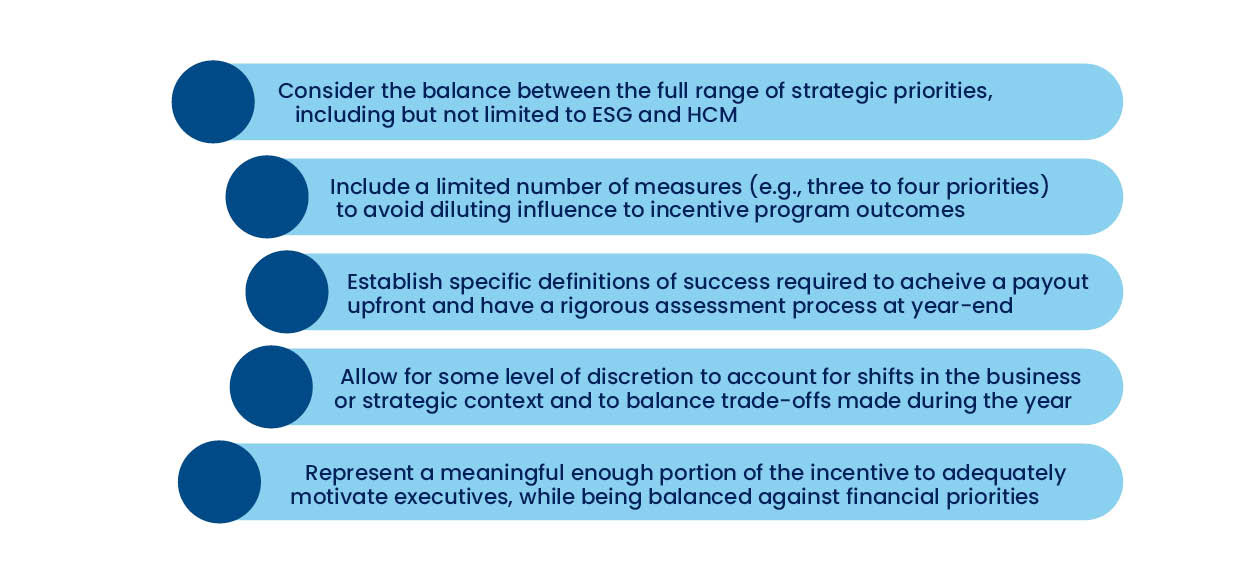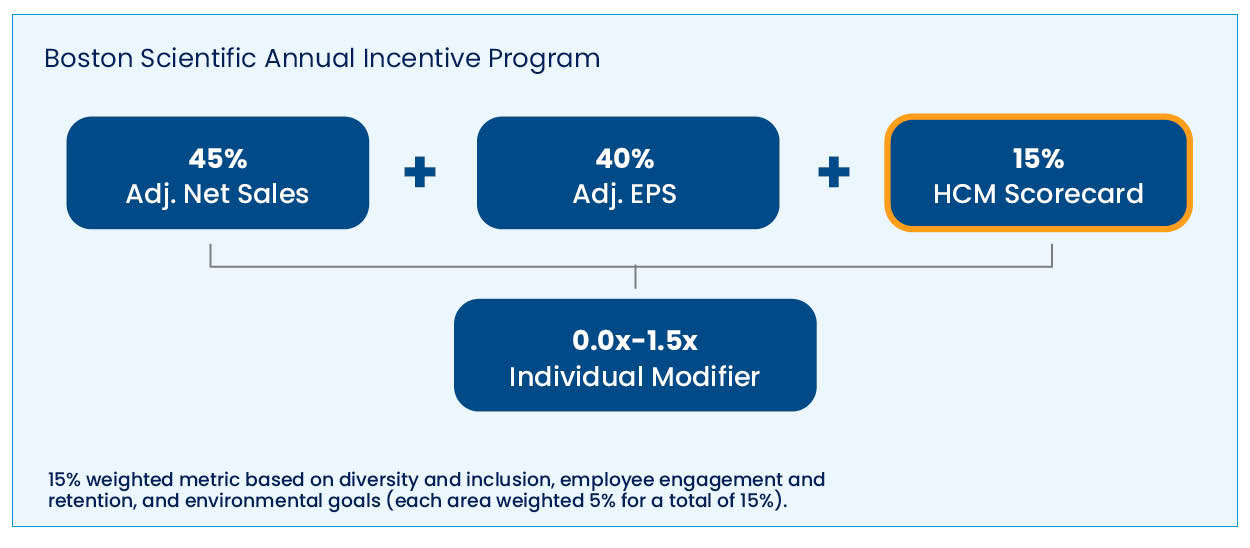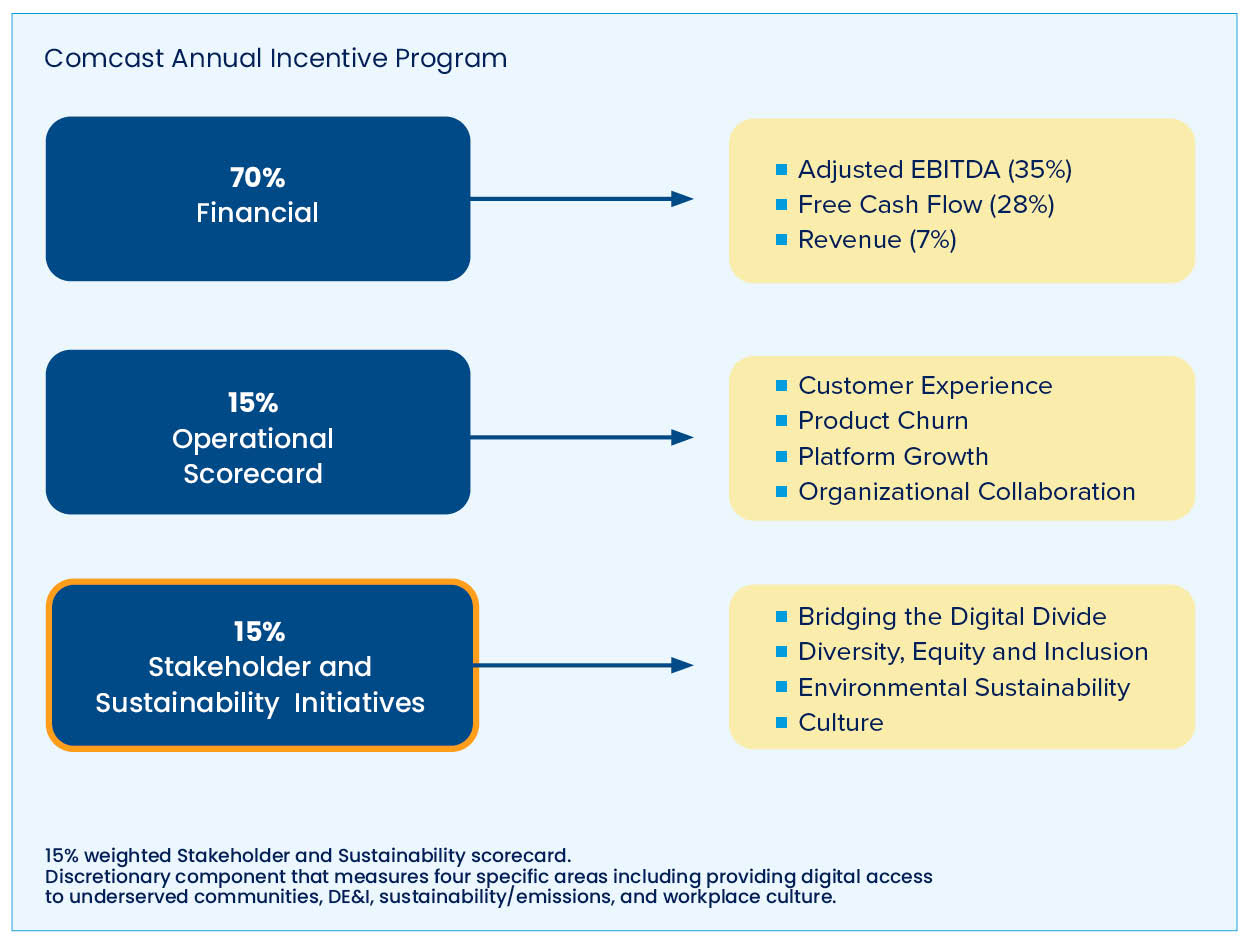- Challenges are present in incentive design. While more companies are adding ESG metrics into incentive programs, doing so can present some challenges (e.g., balance with other priorities, durability over time, calibration and goal rigor, etc.).
- Scorecards can alleviate some of these challenges. The scorecard approach for ESG-linked compensation can mitigate some of those challenges.
- Establish and stick to guiding principles. Companies will want to keep in mind a set of principles as they think through how to structure an effective scorecard for ESG incentives.
- A valuable starting tool in ESG incentive design. When thoughtfully designed, the flexibility built into a scorecard structure may be particularly valuable for newer companies in their journey of ESG and HCM within incentives.
Organizations are facing increasing pressure to consider whether environmental, social and governance (ESG) and human capital management (HCM) have a place in their compensation programs.
Semler Brossy’s “2022 ESG + Incentives Report” found that 70% of the S&P 500 companies already have ESG and HCM metrics in their incentive program, a 23% increase from last year. Despite the rising external pressure, companies need to first identify top ESG and HCM priorities that are material to the overall strategy and establish a set of performance goals for these priorities.
For companies that are early in their ESG and HCM journey and considering a link to incentives, a scorecard may be a good starting point to help address some of the issues that come along with setting ESG and HCM goals. The structure of a scorecard provides flexibility to measure and assess various priorities while motivating shared accountability across a group of individuals.
A scorecard design can help mitigate the challenges that are associated with goal setting — it’s a portfolio of financial and/or strategic objectives, including ESG and HCM goals, that are often unweighted. As there is typically a breadth of ESG and HCM priorities within a single company, the scorecard approach allows the flexibility to assess more than one priority at a time (versus having to choose just one or two metrics for a weighted metric design).
Furthermore, scorecards are typically shared across the executive leadership team, emphasizing shared contributions to priorities critical to the company.
Once these critical steps have been completed, companies can then explore whether ESG has a role in incentives and, if so, be thoughtful about incentive structure and design as well as goal setting.
Setting incentive plan goals for ESG and HCM metrics can be particularly challenging to get right for any company. If set incorrectly, targets can be achieved while still missing the mark on broader progress toward a company’s ESG and HCM strategy. For example, representation goals lend themselves to quantitative measurement, which can be achieved without advancing the broader goals of inclusion and equity — especially in the short term.
On another front, goals may be difficult to quantify and measure reliably, particularly for sustainability and emissions metrics. Even if quantitative goals are available, it may not be clear which metrics should be prioritized given the limited real estate in incentive plans.
Potential Pitfalls of Setting ESG Goals
Once a company decides to incorporate ESG and HCM into its incentive program, it must be cognizant of the potential pitfalls and consider the differences between ESG and HCM metrics and traditional operational and financial goals when setting ESG and HCM goals.
- Balance with other priorities. Placing an ESG and HCM metric in your plan could signal importance to both participants and external audiences over other priorities that are not included in the incentive program. The company will want to ensure the incentive program appropriately balances various business and strategic priorities more broadly.
- Durability over time. Companies will need to ensure that ESG and HCM goals can withstand shifts in strategy in the near- to mid-term and won’t be irrelevant in the event companies need to pivot. For example, a change in strategy may necessitate a hiring strategy shift (such as expanding hiring in one part of the world over another), which would create significant headwinds on a representation goal.
- Calibration and goal rigor. With any metric, companies should ensure that the goals are appropriately stretched and allow for meaningful progress while being realistically attainable with the available resources. Investors are also asking companies to raise the bar on their disclosures and transparency regarding the rigor of their goals. However, it can be difficult for companies to pressure-test on the front end given the asymmetrical visibility of the compensation committee with goal setting and the absence of external audit standards that ensure consistency. Companies will also need to consider how to calibrate the upside and downside leverage of ESG and HCM metrics. Given the broader nature of ESG and HCM goals, there is a question of whether to allow for above-target payouts just for doing the right thing.
- Consistency with communications. Companies should ensure that the incentive goals are aligned with prior or go-forward internal and external communications.
- Internal and external context. Consider other company actions throughout the year that may impact how the compensation committee might assess the performance of the ESG and HCM goals. For example, even though greenhouse gas emissions targets for the year may be on target, a major environmental event caused by the company may eclipse that achievement, increasing the importance of allowing committees the ability to interpret results and exercise discretion.
How to Structure a Scorecard
Scorecards allow companies to establish objective targets, but the compensation committee has the flexibility to evaluate performance against those targets at year-end and assign a payout commensurate with the overall performance (versus having rigid performance curves).
When thinking about how to structure an effective scorecard, these are some principles to keep in mind:

Most companies in the earlier stages of their ESG and HCM journey will choose to incorporate other operational and strategic priorities beyond ESG and HCM within the scorecard to ensure balance in performance measurement. However, as the ESG and HCM journey becomes more mature or in cases where ESG and HCM are viewed as a critical strategic edge, some companies have chosen to move towards scorecards that contain ESG and HCM priorities only.
We’ve provided a couple of company examples below:


Implementing ESG and HCM measures into incentive plan performance measurement can come with much complexity, especially regarding goal setting. When thoughtfully designed, the flexibility built into a scorecard structure may be particularly valuable for newer companies in their journey of ESG and HCM within incentives.
In light of recent SEC news, companies may also consider adding ESG and HCM measures to their pay versus performance disclosure, providing another avenue for companies to feature ESG and HCM priorities more prominently.
Editor’s Note: Additional Content
For more information and resources related to this article see the pages below, which offer quick access to all WorldatWork content on these topics:







